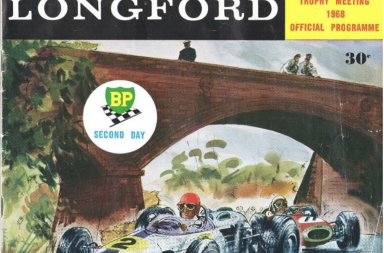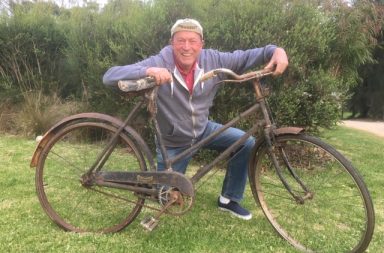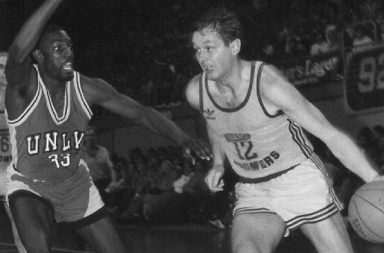There’s a flat ribbon of bitumen stretching across Australia, and we’ve spent most of the past month riveted to it.
The Eyre Highway spanning the Nullarbor Plain is so lifeless that for hundreds of kilometres the only stimulation is in counting how many wedge tailed eagles are gorging themselves on the entrails of dead kangaroos.
We tallied 50 carcasses along the Highway one morning.
The vultures didn’t even look up from their feasting – except to snarl at the crows hanging around for leftovers.
It’s an undignified end for the animal on our coat of arms, getting hammered by a road train, and then being picked over by a distant cousin of the Yanks’ national symbol.
But there’s a lot to be said for a quick death on a plain that’s merciless to creatures both dead and alive.
Out on the Nullarbor, on the family’s ‘big lap’ in a caravan around Australia, we found ourselves yearning to be surprised by something other than roos, road trains and that 1200km ribbon.
One afternoon on the Eyre Highway, we thought we had seen a reincarnation of the ‘Eucla nymph’, the legendary topless blonde who made worldwide headlines in the early ‘70s by startling motorists and then vanishing.
A woman stepped out from behind the speargrass between Ceduna and Eucla, raised her hand, and waved us over.
It was a relief to see a living being, and a bonus that she spoke, even if she wasn’t as charming as the nymph might have been.
In truth, she only said six words: “Blow into this, sir” and “thank you.”
No doubt the breath testers have a healthy strike rate on Highway One, especially on the world’s longest stretch of undeviating road, the notorious 90 mile straight between Caiguna and Balladonia.
We saw two policemen arrest a bloke in a clapped out Laser near Cocklebiddy roadhouse, and we followed them as they proceeded in a westerly direction to the nearest lock-up.
One officer drove the Laser while his partner trailed in the police car for 400km, including the 90 mile straight, to the closest station, at Norseman in WA.
That’s a long day in the saddle to round up one bloody idiot.
But everything on the Nullarbor is outrageously big – the eagles, the trucks, the skies – and there’s no escaping its breadth.
Our daughters, Jess and Annie, wanted to see Western Australia and, after their taste of Queensland and the Northern Territory in the previous year, they had high hopes of swimming with dolphins, climbing mountain ranges and wallowing under remote waterfalls.
Unfortunately, they didn’t get to tick any of their wish list.
Half of our journey was taken up with traversing the world’s biggest hunk of limestone, so we visited only a slice of a State which covers one third of the continent.
Our course was what fair dinkum adventurers might reasonably describe as a riesling route.
After finally escaping the Nullarbor, we went down to Esperance, drove 500km across to Albany, and then into the karri and tingle forests around Walpole and Denmark.
Next we quaffed our way through some of the 110 Margaret river wineries, appeasing our two daughters with bribes of chocolate and quandong jam, before we plunged into the glorious city beaches of the world’s most remote capital, Perth.
We went along to Subiaco oval to see a Dockers home game, but on a 30 degree afternoon it just didn’t feel like footy.
The Freo fans tried hard to pretend they were going to the footy, and not spending another sunny arvo on Cottesloe beach.
They even wore scarves and coloured jumpers, but the board shorts and thongs gave them away.
For all that we encountered in the west, travelling the Nullarbor was the most unforgettable experience.
In a country where most of the populace either lives on a narrow strip down the eastern seaboard, or shelters on a sandy patch of the west coast, the Nullarbor remains a vast, foreboding barrier.
Most Aussies never tackle it, or pass over it from a great height, or they fast track the ordeal as best they can.
As the fella at the petrol pump in Port Augusta scoffed, the Nullarbor is like an outback dunny – you get on and you get off as fast as you can.
That was after he slugged me $1.25 for a litre of unleaded. (Postscript: $1.25 for a litre of gas was a fortune in those days!).
We pulled into Port Augusta from Adelaide late on a Saturday and were faced with one of South Australia’s most frequently asked questions: What do you do on a Saturday night in Port Augusta?
The lights were on at the picture theatre, so we went to see Cat in the Hat.
All 10 patrons arrived at the same moment, and the lady selling tickets and running the shop was under siege.
Her projectionist hubby was cranking up the main feature, so she took my order for a coffee and promised she’d make it when she could.
Fifteen minutes into the film, she sneaked in, handed me freshly brewed coffee in a china cup, and a complimentary biscuit.
That’s country hospitality.
Our caravan park was a little less convivial, being surrounded by barbed wire.
Shortly after midnight, I heard a disturbance outside a nearby van and looked out to see a youth sprinting for dear life.
Ten seconds later, a rotund caravanner wearing only a pair of shorts wobbled by, puffing and panting, trying to give chase.
We heard next morning that the intruder was apprehended after he got stuck in the fence, which I guess is one way to spend a Saturday night in Port Augusta.
His pursuer is expected to make a full recovery.
We spent three nights in South Australia, long enough to claim the five cent deposit on our cordial bottles, and to stock up for the Nullarbor.
Just after we left Ceduna on the Eyre Highway, we came upon the first weird sight – an old horse hauling a painted gypsy wagon.
The bloke dangling the reins, Bill Murray, recited bush poetry for us and offered some unsolicited advice.
“Never drive at night,” he warned. “And keep your kids away from those bloody computers.”
Bill couldn’t remember where he came from, or what started him on the never-ending road nine years ago, but he did skite about his nag Dasher’s glamorous past.
As Dashing Romeo, the 12 year-old won over a hundred grand in prizemoney on Victorian racetracks, but Bill found him with a bowed tendon in a saleyard at Lake Boga.
This is Dasher’s second crossing of the Nullarbor and he has to plod from one waterhole to another, 30km a day.
Still, he’s going better than the roos he steps around on the blue metal.
The name Nullarbor is bad Latin for no tree, but most of the great expanse does in fact have stunted trees (my 9 year-old calls them big broccoli).
And, if drowsiness is a problem, there’s a guaranteed wake-up shock every time you fill the petrol tank.
When we asked for water to fill a small flask, we were told it would cost $1.50, seeing as water is scarcer than petrol.
At Balladonia roadhouse, travellers pay $3.50 for a shower.
But, for all the costs and discomfort of the Nullarbor, the patient traveler is rewarded by some fascinating places and people.
At Eucla, near the border, we stumbled across the world’s most isolated golf tournament, the annual Eucla classic.
It’s run every May among the saltbush and melaleucas by Rasa Patupis, whose family owns the motel.
Rasa, 39, came to Eucla when she was two and, even though she has a Masters in Business and has traveled the world, she says she could never leave the Nullarbor.
Golfers must remember some important local rules at royal Eucla, such as not jumping on or near the second green.
This is because there are massive blowholes beneath the thin clay surface, and people have been known to disappear through the crust down sink holes.
Celebrations at the Eucla Golf Classic tend to be fairly muted, and players even resist jumping up and down when Rasa’s mutt, Maggot, steals their balls.
The Nullarbor has so many bizarre charms that I eventually had to succumb to one.
At Yatala roadhouse, near the Aboriginal mission south of Maralinga, I spotted a hollow piece of wood, a metre and a half in length.
I remarked to the roadhouse manager that it looked spooky.
He thrust one end to my ear and motioned me to listen to the deep, thundering noises.
“Mammoo,” he enthused, adding that the rumbling sounds emanated from the demons trapped within.
I have never before shown an interest in didgeridoos, but I felt compelled to take that one home.
It now sits in a quiet corner of my house, though I doubt I’ll ever learn to play it.
But every now and then, I’ll put it to my ear and think about all the roadhouse, the roos and the remote communities across the Nullarbor.



